22 Wild Animals in the Philippines [Wildlife in the Philippines]
Want to know more about the wildlife in the Philippines?
Discover 22 wild animals in the Philippines in this post, as well as interesting facts about them. 🇵🇭
Learn All About Filipino Animals
Ready to learn all about Filipino animals?
I’ve always been fascinated by animals, and by how they can be so different from one country to another. In this guide, we’ll focus on the many animals the Philippines has on the land, in the sky, and underwater.
I’ve split the guide into 5 categories:
- Native animals from the Philippines
- Endangered animals of the Philippines
- What is the Philippines national animal?
- How many animals native to the Philippines?
- What is the most unique animal in the Philippines?
Let’s dive in right away with our first category!
Native Animals from the Philippines
The Philippines is an Asian archipelagic country located in the southeastern part of the continent, in the western Pacific Ocean. It is made of more than 7,600 islands, is the world’s thirteenth-most populous country, and used to be a Spanish colony. It shares maritime borders with Japan, Palau, Indonesia, Malaysia, Taiwan, Vietnam, and China, and although its largest city is Quezon City, its capital is Manila (or Metro Manila), which counts more than 1,846,000 inhabitants (but more than 24,100,000 if you include the metropolitan area!).
An interesting part of the country that I wanted to tackle is its wildlife. In light of that, I have listed the best of it, and I hope you will love learning what animals live in the Philippines.
Here’s the Philippines animals list.
1. Philippine eagle
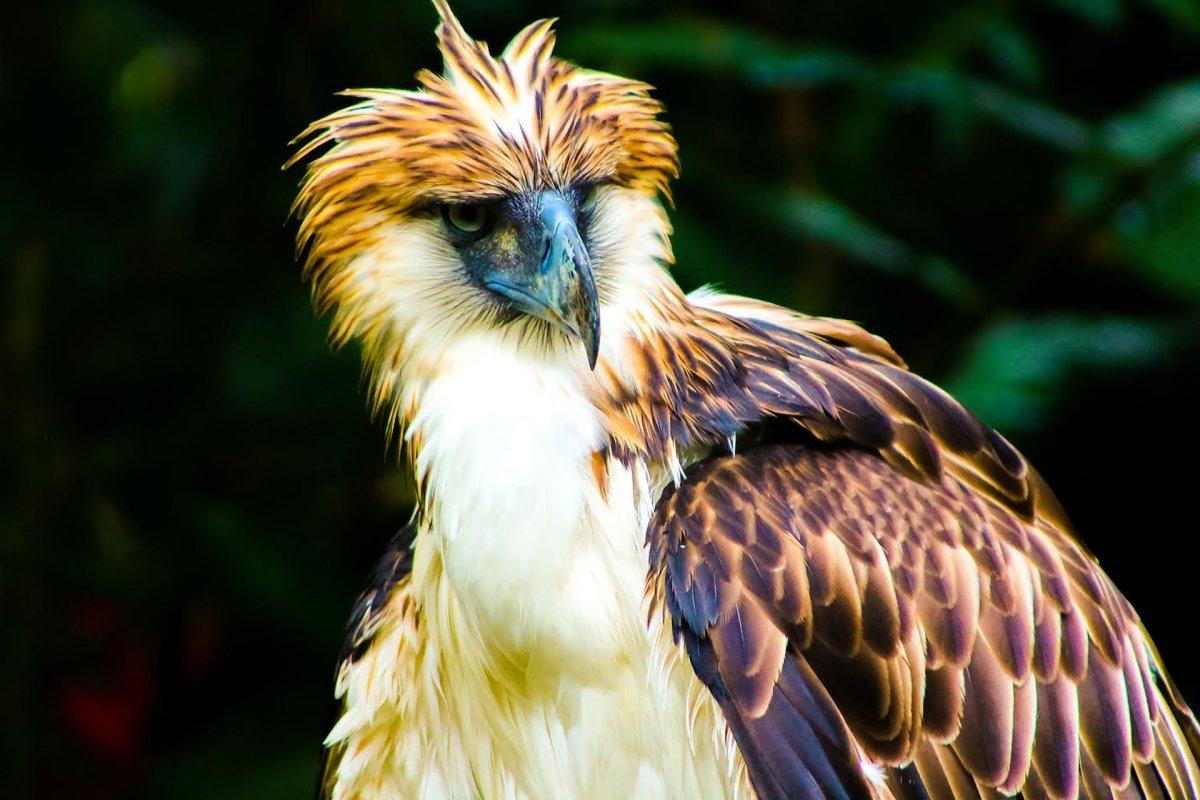
- Name: Philippine eagle
- Scientific name: Pithecophaga jefferyi
- Conservation status:
The Philippine eagle, also known as the great Philippine eagle or the monkey-eating eagle, is the largest eagle in the world, and it is the national bird of the country.
It is endemic to the forests of the Philippines, which is why it is on the brink of extinction: only about 35 percent of the country’s forests are still untouched, and fewer than 400 Philippine eagle pairs remain in the wild.
2. Philippine crocodile
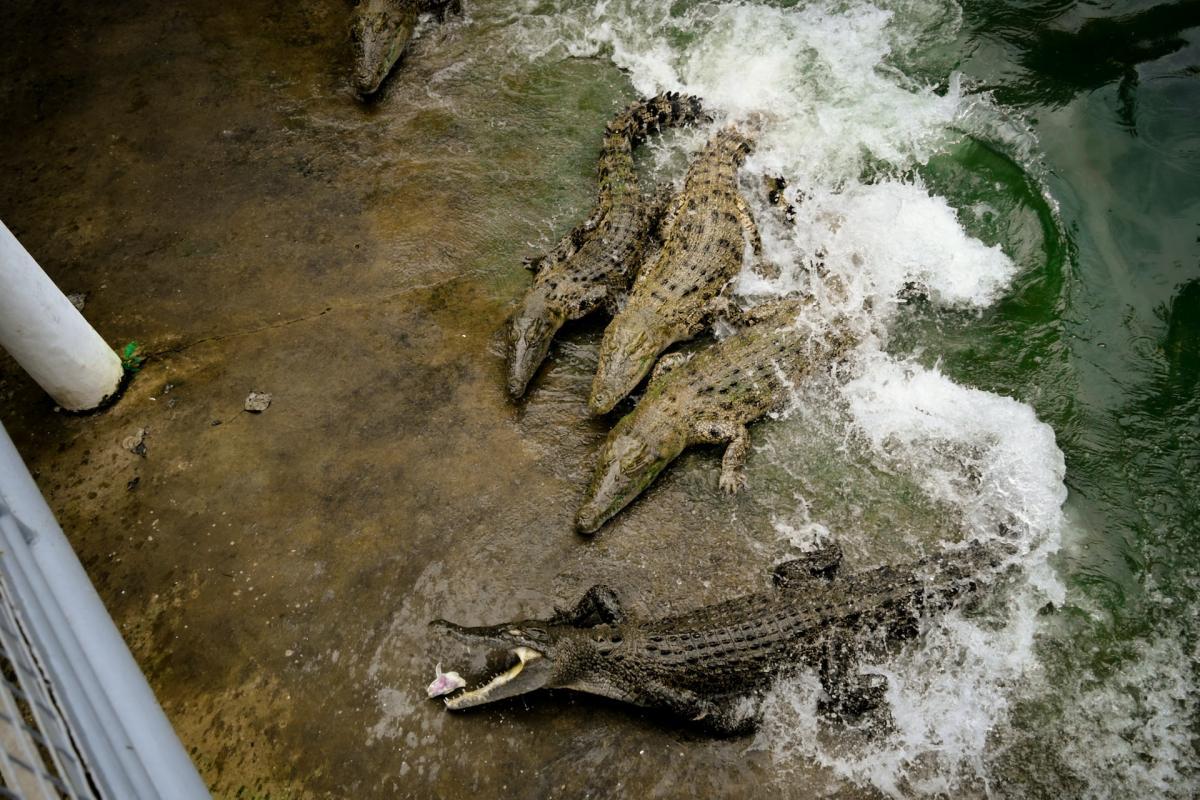
- Name: Philippine crocodile
- Scientific name: Crocodylus mindorensis
- Conservation status:
The Philippine crocodile is also impressive, also endemic to the Philippines… and also critically endangered.
Also known as the Mindoro crocodile or the Philippine freshwater crocodile, it has been overexploited and suffers from unsustainable fishing methods. This crocodile can primarily be found in the Northern Sierra Madre Natural Park now. With only about 100 individuals remaining, the Philippine crocodile is the most seriously threatened crocodile species in the world!
3. Philippine forest turtle
- Name: Philippine forest turtle
- Scientific name: Siebenrockiella leytensis
- Conservation status:
The Philippine forest turtle, also known as the Philippine pond turtle, the Leyte pond turtle, or locally as the bakoko, is a species of forest turtle endemic to northern Palawan and a few surrounding islands.
Although this turtle is pretty common in creeks of this small range, its populations are disappearing in other areas, and it can now only be found in a zone of about 100 km² / 38 sq mi.
4. Asian small-clawed otter
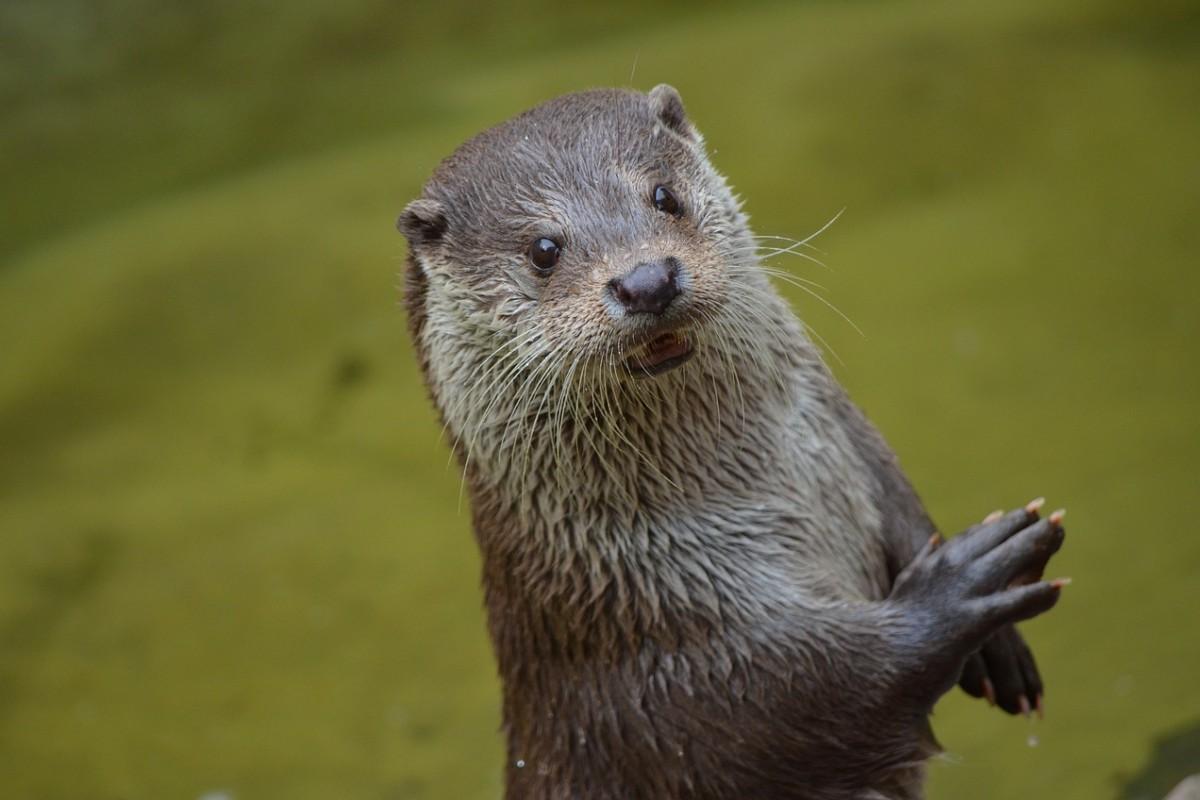
- Name: Asian small-clawed otter
- Scientific name: Aonyx cinereus
- Conservation status:
The Asian small-clawed otter, also known as the small-clawed otter or the oriental small-clawed otter, is a species of semi-aquatic mammal native to southern and southeastern Asia. As its name suggests, it has very small claws that do not extend beyond its webbed feet. Besides, it is the smallest otter in the world, reaching only up to 960 mm / 37.6 in!
This otter is considered vulnerable to extinction because of poaching for its fur, the illegal pet trade, and habitat loss.
5. Philippine flying lemur
- Name: Philippine flying lemur
- Scientific name: Cynocephalus volans
- Conservation status:
The Philippine flying lemur, also known as the Philippine colugo, is a species of colugo endemic to the southeastern parts of the archipelago. Despite its name, it is neither a lemur nor is it flying!
This flying lemur can primarily be found in Bohol and the Mindanao region, usually in heavily forested areas. It spends most of its time between the forest’s middle level and the top of the rainforest canopy, and is both slow and clumsy when it comes to climbing; instead, it glides from tree to tree to reach its nest or some food.
6. Philippine long-tailed macaque
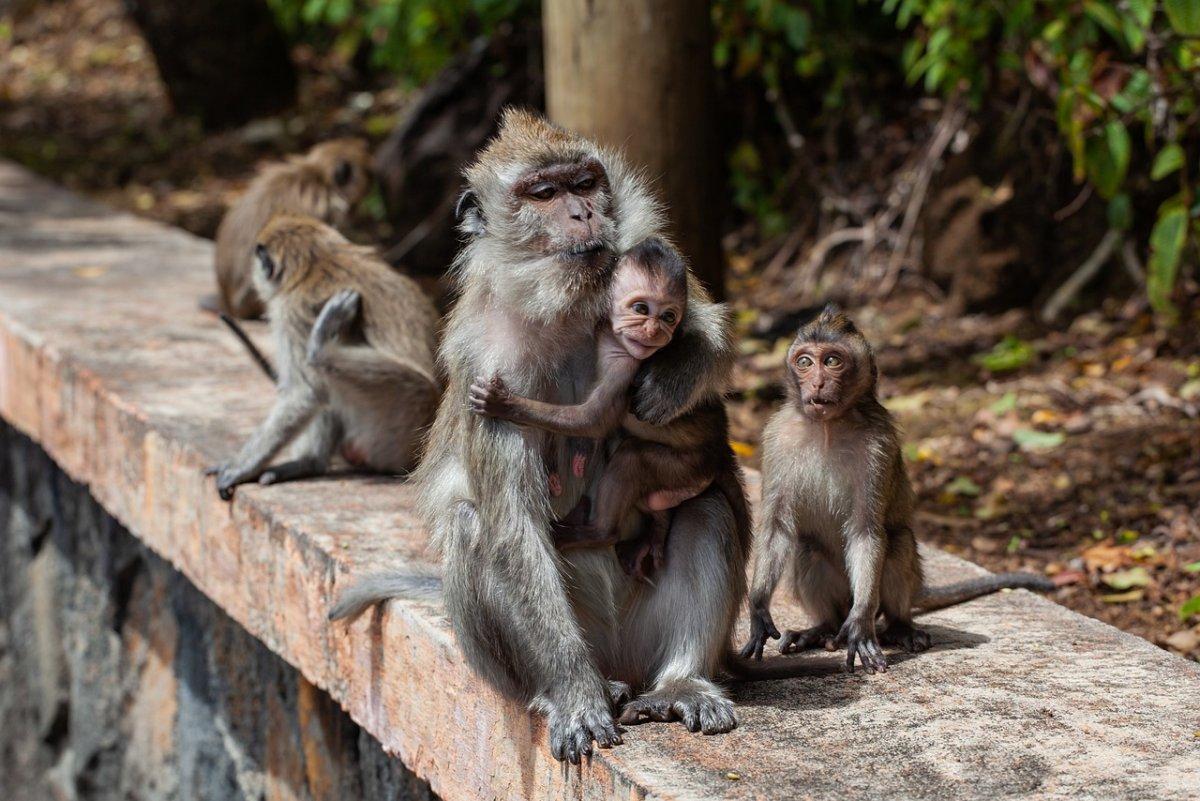
- Name: Philippine long-tailed macaque
- Scientific name: Macaca fascicularis philippensis
- Conservation status:
The Philippine long-tailed macaque is a subspecies of the more famous crab-eating macaque endemic to the woodlands and forests of the Philippines. Its main population is located in the western central Philippines, mainly in the Visayas, Mindanao, and Palawan, where it inhabits mangrove forests.
This macaque lives from sea level to up to 1,800 m / 5,900 ft, and it has a reddish-brown coat. As its name implies, it has a particularly long tail, reaching up to 600 m / 1.97 ft long!
7. Tamaraw
- Name: Tamaraw
- Scientific name: Bubalus mindorensis
- Conservation status:
The tamaraw, also known as the Mindoro dwarf buffalo, is a small species of hoofed mammal endemic to the island of Mindoro in the Philippines. While it used to be found anywhere from sea level to up to 2,000 m / 6,561 ft above it, it is now restricted to scattered, remote grassy plains and is on the brink of extinction.
Although it looks like the national animal of the country, the carabao, the tamaraw is not related to it or to the common water buffalo.
8. Gray’s monitor
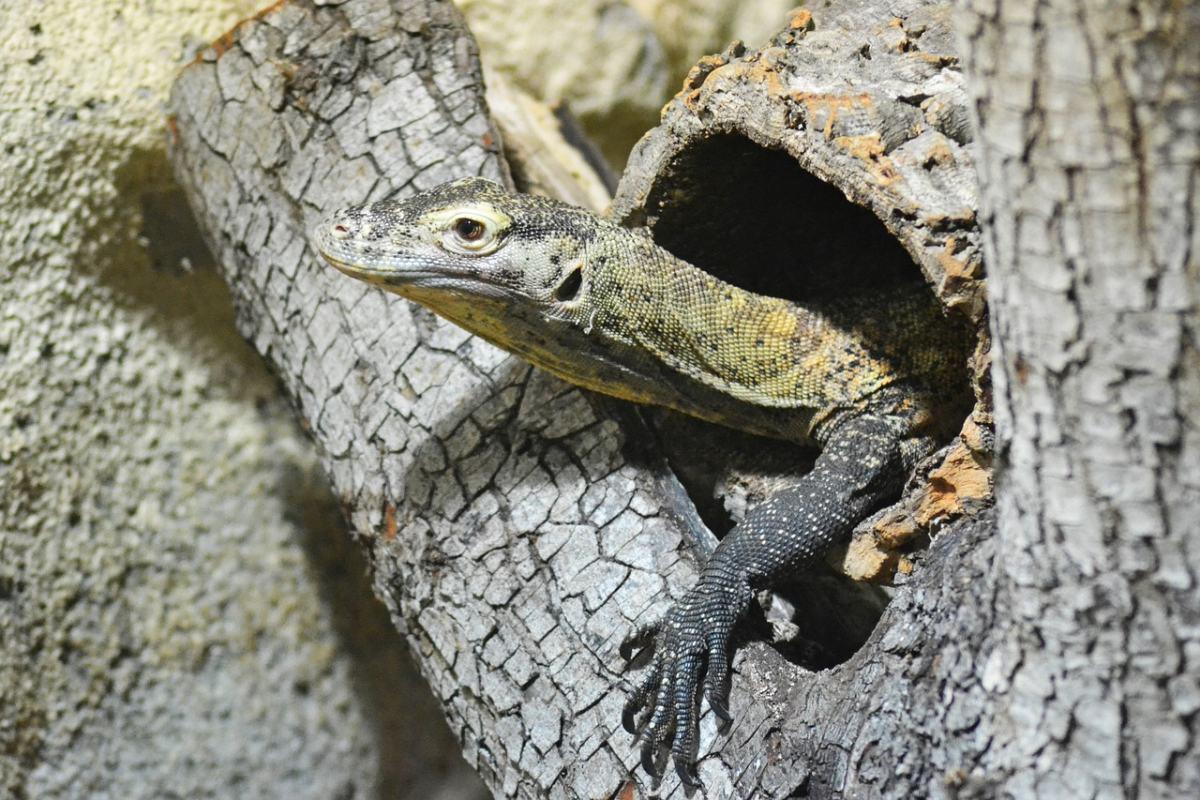
- Name: Gray’s monitor
- Scientific name: Varanus olivaceus
- Conservation status:
The Gray’s monitor, also known as the ornate monitor, the butaan, or Gray’s monitor lizard, is a species of monitor lizard endemic to several islands of the Philippines, including Polillo Island, southern Luzon, and Catanduanes.
While listed as vulnerable to extinction, a new assessment is actually necessary, and it might very well be already critically endangered, primarily due to habitat loss, hunting for food, and capture for the pet trade.
9. Philippine mouse-deer
- Name: Philippine mouse-deer
- Scientific name: Tragulus nigricans
- Conservation status:
The Philippine mouse-deer, also known as the pilandok or the Balabac chevrotain, is a small species of ruminant endemic to Balabac and its neighboring islands, in the southwestern Philippines.
This mouse-deer is part of the chevrotain family and is both solitary and nocturnal. It primarily feeds on flowers, leaves, and other vegetation, and tends to hide in dense vegetation during the day, which is why it is particularly difficult to spot in the wild.
10. Visayan warty pig
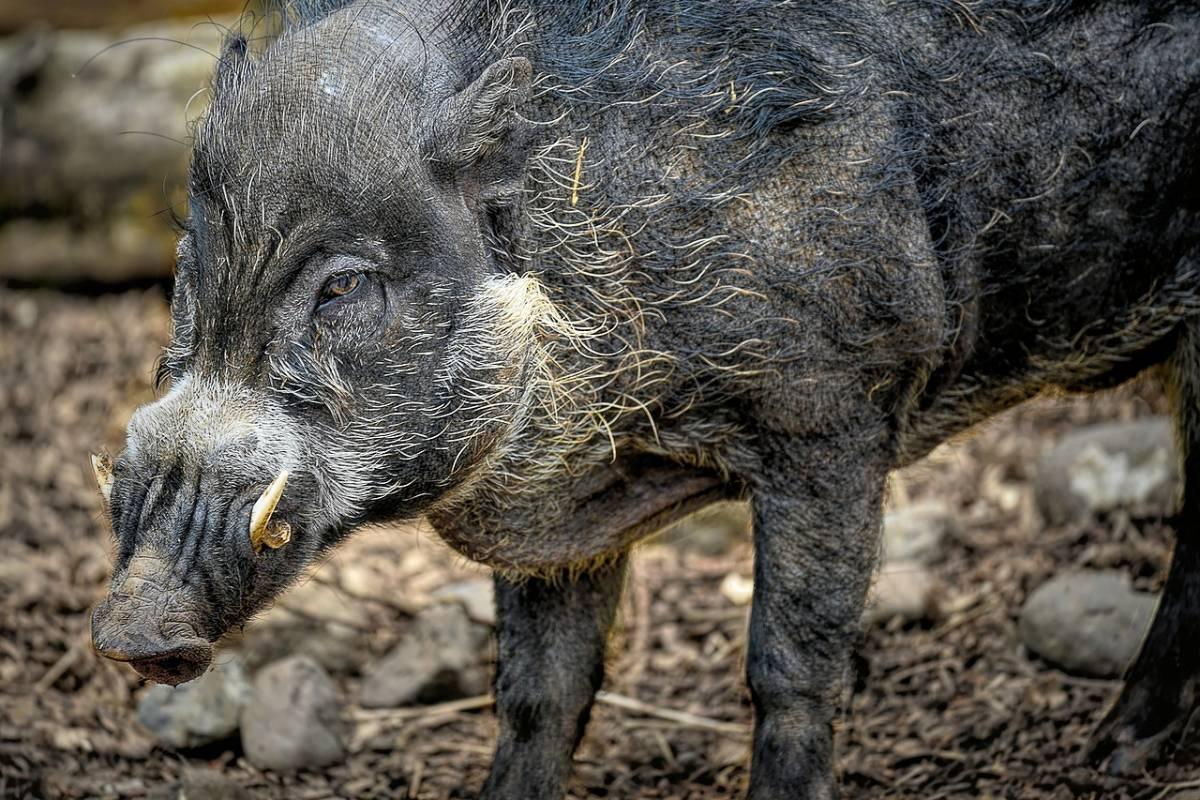
- Name: Visayan warty pig
- Scientific name: Sus cebifrons
- Conservation status:
The Visayan warty pig is a species of wild pig endemic to six of the Visayan Islands, namely Panay, Cebu, Masbate, Negros, Guimaras, and Siquijor, in the central Philippines. It has many local names, which roughly translate to forest pig, wild pig, dark pig, and wild boar.
This wild pig is a social species, living in groups of about 4 to 6 individuals. It mainly feeds on fruits, roots, and tubers, and is critically threatened by agricultural expansion and habitat loss.
11. Giant golden-crowned flying fox
- Name: Giant golden-crowned flying fox
- Scientific name: Acerodon jubatus
- Conservation status:
The giant golden-crowned flying fox, also known as the golden-capped fruit bat, is a species of megabat endemic to the Philippines. It is one of the largest bats in the world, and has the longest forearm length of any bat, reaching outstanding lengths of up to 215 mm / 8.5 in!
This flying fox is mainly frugivorous and feeds on leaves and figs. It sleeps during the day in tree roosts made of several thousands of individuals and emerges at night.
12. Philippine pangolin
- Name: Philippine pangolin
- Scientific name: Manis culionensis
- Conservation status:
The Philippine pangolin, also known as the Palawan pangolin or locally as the balintong, is a species of pangolin endemic to the southwestern Philippines. It inhabits grasslands and primary and secondary forests and is seriously endangered because of hunting for its meat and scales.
This animal is reclusive and nocturnal, and either lives alone or in pairs. It almost exclusively feeds on termites and ants, and sometimes consumes stones and sand to help grind food in its stomach.
13. Melon-headed whale
- Name: Melon-headed whale
- Scientific name: Peponocephala electra
- Conservation status:
We haven’t mentioned it yet, but since the Philippines is an archipelago in the middle of the tropical parts of the Pacific Ocean, it also has incredible marine wildlife! And the melon-headed whale, also known as the little killer whale, the electra dolphin, or the many-toothed blackfish, is a great example of that.
Found in all subtropical and tropical oceans of the planet, the melon-headed whale was named after its head shape. It is found near shore in countries such as the Philippines, French Polynesia, and Hawaii.
14. Palawan binturong
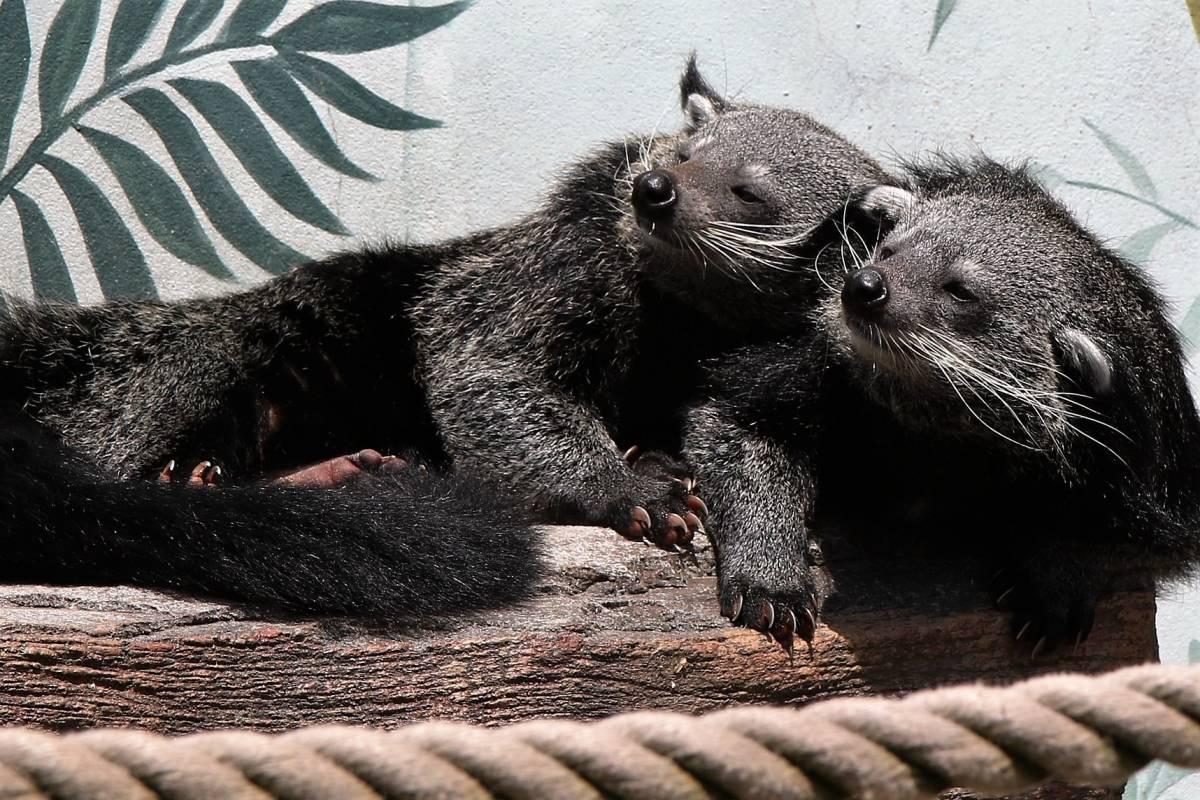
- Name: Palawan binturong
- Scientific name: Arctictis binturong whitei
- Conservation status:
The Palawan binturong, also known as the Palawan bearcat, is a subspecies of the binturong, a peculiar mammal. It is endemic to the island of Palawan in the Philippines and lives in tropical rainforests.
This viverrid is omnivorous, and it feeds on small animals, fruit and carrion. It is mainly threatened by the pet trade and is sometimes also hunted for human consumption. Although docile when handled, it has particularly sharp teeth and claws.
15. Visayan leopard cat
- Name: Visayan leopard cat
- Scientific name: Prionailurus javanensis sumatranus
- Conservation status:
The Visayan leopard cat is a subspecies of the Sunda leopard cat. It is endemic to the islands of Negros, Panay, and Cebu in the Philippines, and has a range smaller than 20,000 km² / 7,700 sq mi, which is why it is listed as vulnerable to extinction.
This wild cat lives in isolated forests, as well as sugarcane farms. It can be found in captivity at the Mariit Wildlife and Conservation Park in the Philippines.
16. Walden’s hornbill
- Name: Walden’s hornbill
- Scientific name: Rhabdotorrhinus waldeni
- Conservation status:
Walden’s hornbill, also known as the Visayan wrinkled hornbill, the rufous-headed hornbill, or the writhed-billed hornbill, is a species of hornbill endemic to the islands of Panay and Negros in the Philippines. It lives in the rainforests and has a unique yellow throat and a red crest on top of its head.
This bird is both large and extremely rare, as fewer than 160 individuals remain. It is one of six of the world’s 50 most evolutionary distinct and globally endangered (EDGE) species that can be found in the Philippines.
17. Red-vented cockatoo
- Name: Red-vented cockatoo
- Scientific name: Cacatua haematuropygia
- Conservation status:
The red-vented cockatoo, also known as the Philippine cockatoo, the agay, the kalangay, the abukay or the katala, is a species of cockatoo endemic to the Philippines. It is on the brink of extinction because of environmental degradation and the illegal wildlife trade.
This cockatoo primarily survives in the Palawan Faunal Region thanks to the Katala Foundation, which has been running conservation programs since 1998. Thanks to them, the population of the red-vented cockatoo has increased in some areas, from 23 in 1998 to 300 in 2015 for example!
18. Visayan spotted deer
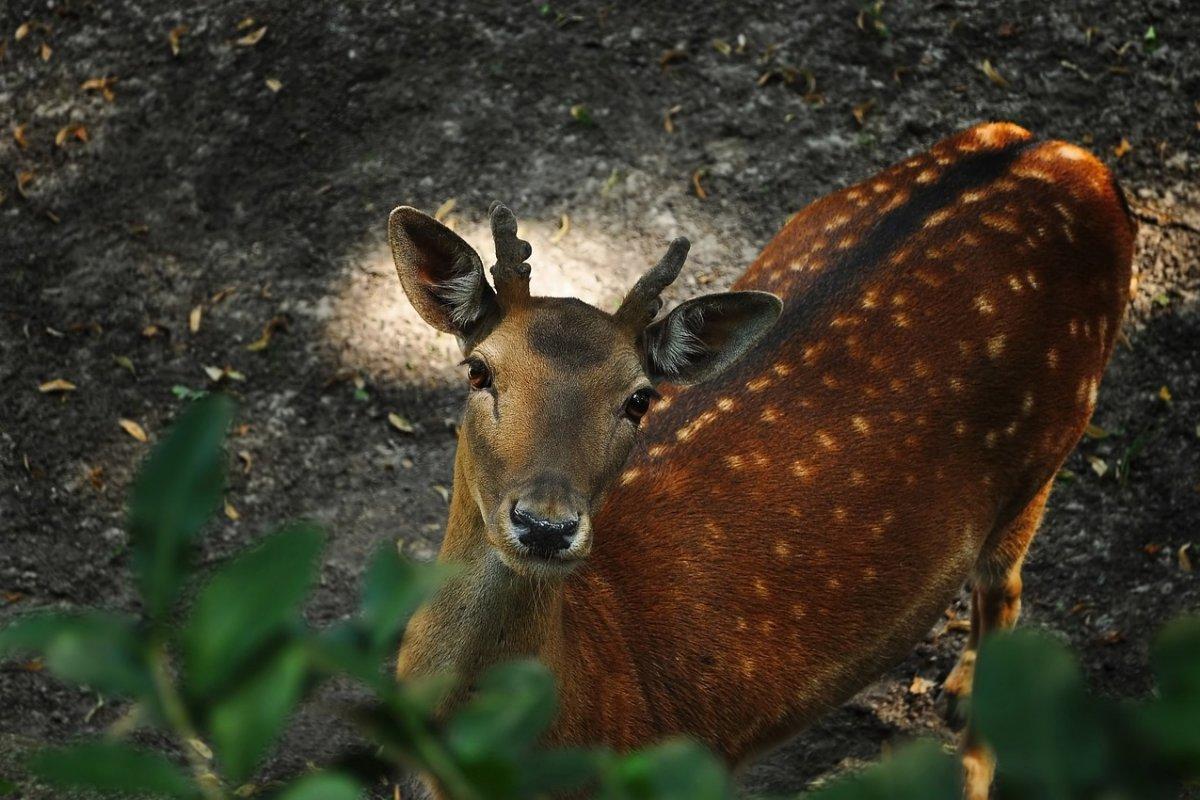
- Name: Visayan spotted deer
- Scientific name: Rusa alfredi
- Conservation status:
The Visayan spotted deer, also known as Prince Alfred’s deer, the Visayan deer, or the Philippine spotted deer, is a species of deer mainly living in the rainforests of the Visayan Islands of Negros and Panay.
This deer has about the same range as the Visayan warty pig, and it also suffers from habitat loss. It is protected under Philippine law but is still hunted by local villagers and sports hunters.
19. Philippine eagle-owl
- Name: Philippine eagle-owl
- Scientific name: Bubo philippensis
- Conservation status:
The Philippine eagle owl is a species of owl endemic to the Philippines. It inhabits the lowland forests of the islands of Samar, Catanduanes, Luzon, Bohol, Mindanao, Leyte, and Sibuyan, where it feeds on amphibians and rodents.
Chicks of this species are extremely vulnerable, which is a serious threat to the survival of the Philippine eagle-owl: they cannot fly and therefore cannot feed by themselves, but they also need the body heat from their mother because they are unable to thermoregulate by themselves!
20. Green humphead parrotfish
- Name: Green humphead parrotfish
- Scientific name: Bolbometopon muricatum
- Conservation status:
The green humphead parrotfish, also known as the double-headed parrotfish, the buffalo parrotfish, or the giant parrotfish, is the largest species of parrotfish in the world, reaching lengths of up to 1.5 m / 4.9 ft and weighs up to 75 kg / 165 lb.
This fish lives on reefs in the Pacific and Indian Oceans, and it is the largest herbivorous fish living in coral reefs.
21. Whale shark
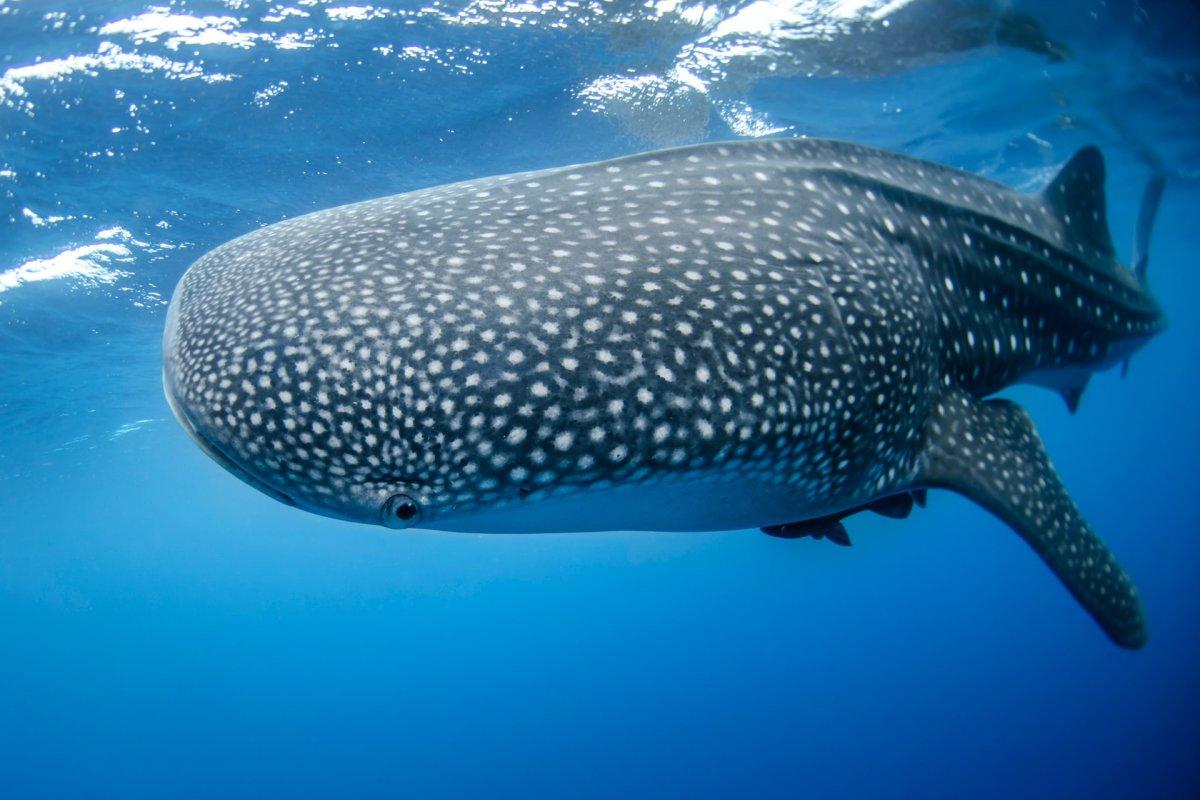
- Name: Whale shark
- Scientific name: Rhincodon typus
- Conservation status:
The whale shark is definitely an impressive creature: it is the largest fish in the world and by far the largest non-mammalian vertebrate! It lives in warm waters, always above 21 °C / 70 °F, and migrates depending on the season.
In the Philippines, the whale shark can be spotted during its feeding season. In some areas such as Oslob, fishermen even feed whale sharks with shrimps so they return every morning for divers and tourists!
22. Blue-winged racket-tail
- Name: Blue-winged racket-tail
- Scientific name: Prioniturus verticalis
- Conservation status:
The blue-winged racket-tail, also known as the Sulu racquet-tail, is a species of parrot endemic to Tawi-Tawi island in the Philippines. It is one of the most endangered parrots in the world, primarily due to poaching for the bird trade and habitat loss.
This parrot has dark green plumage, and males have colorful blue and redheads. It lives in tropical moist lowland forests, as well as tropical and subtropical mangrove forests, and from 50 to 250 individuals remain in the wild.
—
So there you have them, these were my 22 endemic animals in the Philippines. I hope you enjoyed this list and that you learned something new today.
In case you want to learn more about the Philippines wild animals, feel free to keep reading, as I still have lots of things to tell you about:
Endangered Animals of the Philippines
This is definitely the saddest part of the list, but it is very important to raise awareness. Because of this, let’s go through the list of endangered animals in the Philippines.
Here are the animals in danger of extinction in the Philippines.
- Bitungu
- Bagangan sa Erungan
- Pait
- Barbodes flavifuscus
- Barbodes katolo
- and 10 more…
- Sulu hornbill
- Tamaraw
- Philippine crocodile
- Chinese crested tern
- Philippine eagle
- and 49 more…
- Irrawaddy dolphin
- Green racquet-tail
- Southeast Asian box turtle
- Calamian deer
- Whale shark
- and 115 more…
To see the full list of endangered species in the Philippines, head over to the International Union for Conservation of Nature’s Red List.
What is the National Animal of the Philippines?
The national animal of the Philippines is the carabao.
While you might have never heard of it, the carabao is a species of domestic water buffalo native to the Philippines.
The carabao has had a particular cultural importance in the Philippines, and it has been used extensively in sugarcane plantations. It is a symbol of hard work and a sense of industry, and it has been domesticated for centuries.
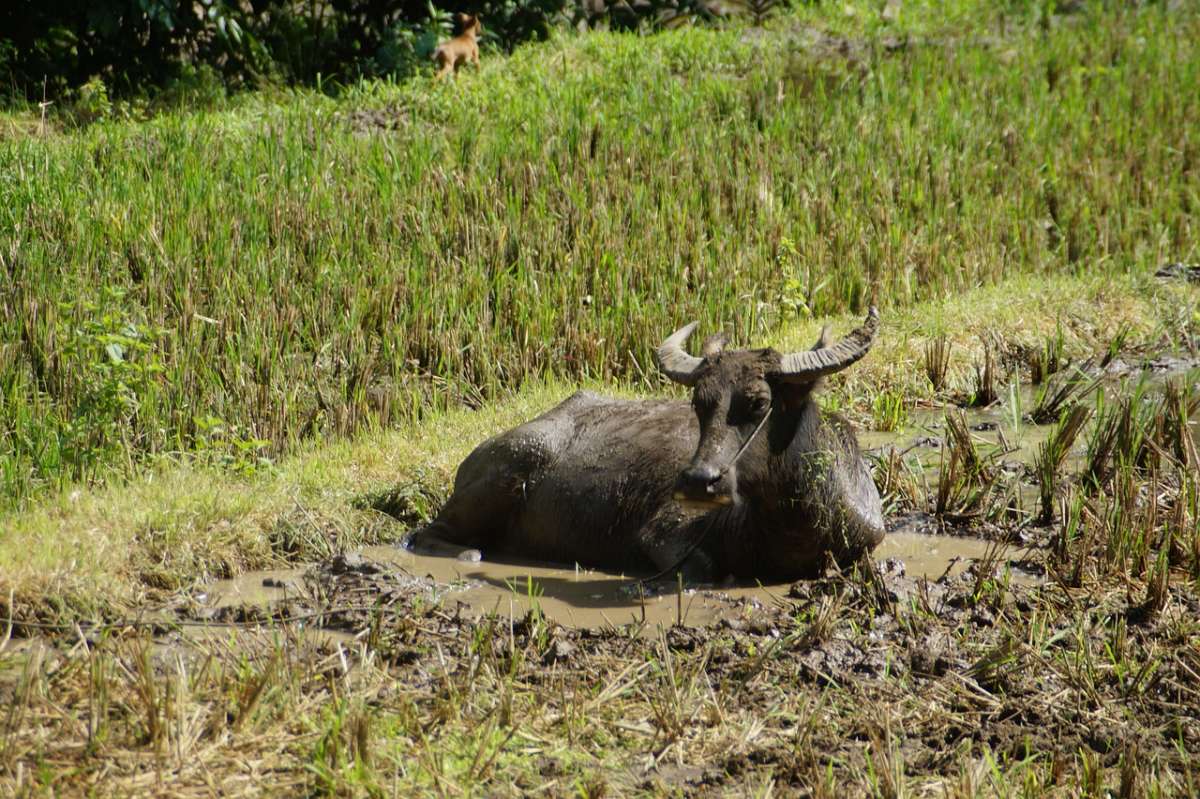
How Many Animals Native to the Philippines?
What is the diversity of native animals in the Philippines?
Let’s look at the total number of species of Chordata (mammals, birds, fishes, and reptiles).
Total number of animal species in the Philippines: 4,060 (15,319 in total in South and Southeast Asia)
What is the most unique animal in the Philippines?
There are quite a few endemic species in the Philippines and a lot of beautiful ones, but the one that wins it all is the Philippine eagle.
The Philippine eagle is the largest bird in the world, and the third-heaviest one, after Steller’s sea eagle and the harpy eagle. It is seriously endangered in the Philippines, to where it is endemic because less than half of the country’s forests are still intact.
More About Animals in the World!
Loved these facts about the endemic species in the Philippines? Want to see what animals live in other countries?
Then check out these posts:
Or click here to see ALL the facts up on the blog! Spoiler alert: there’s A LOT of them.
Share the knowledge! Click on the buttons below to share information about these animals found in the Philippines with your friends, and help them learn more about the world 🙂
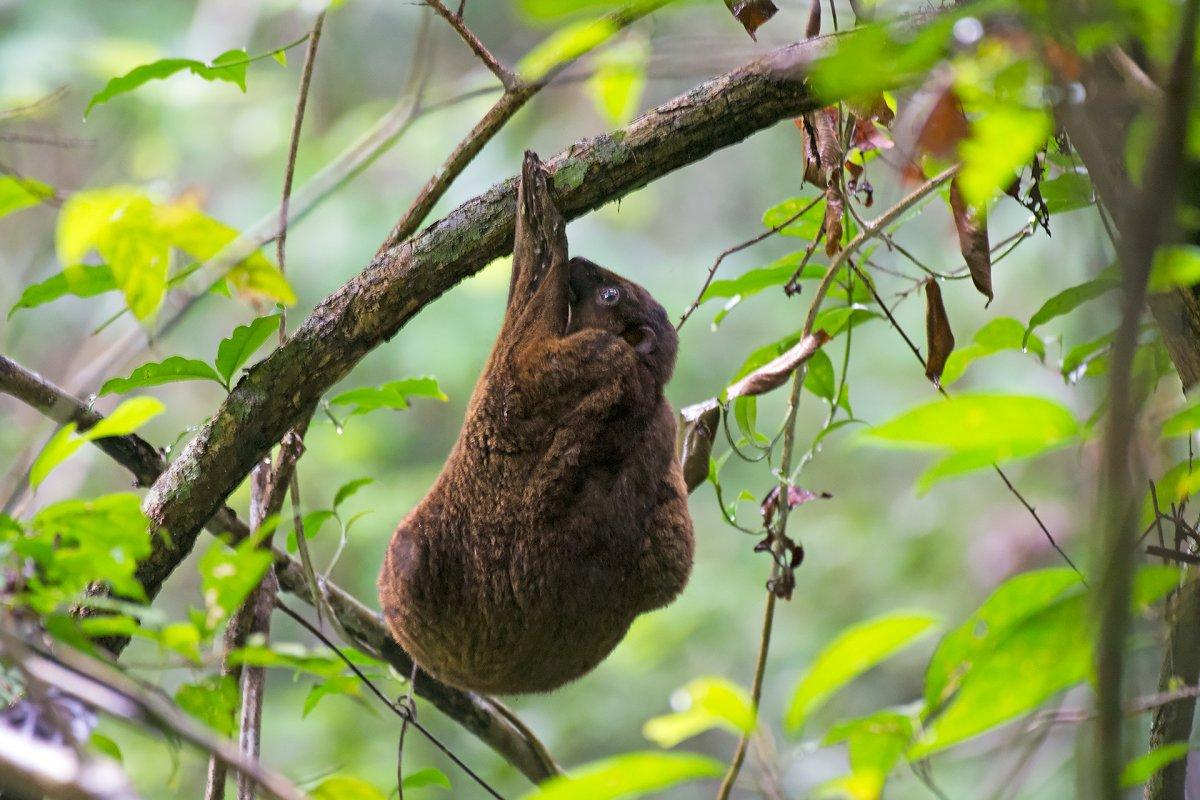
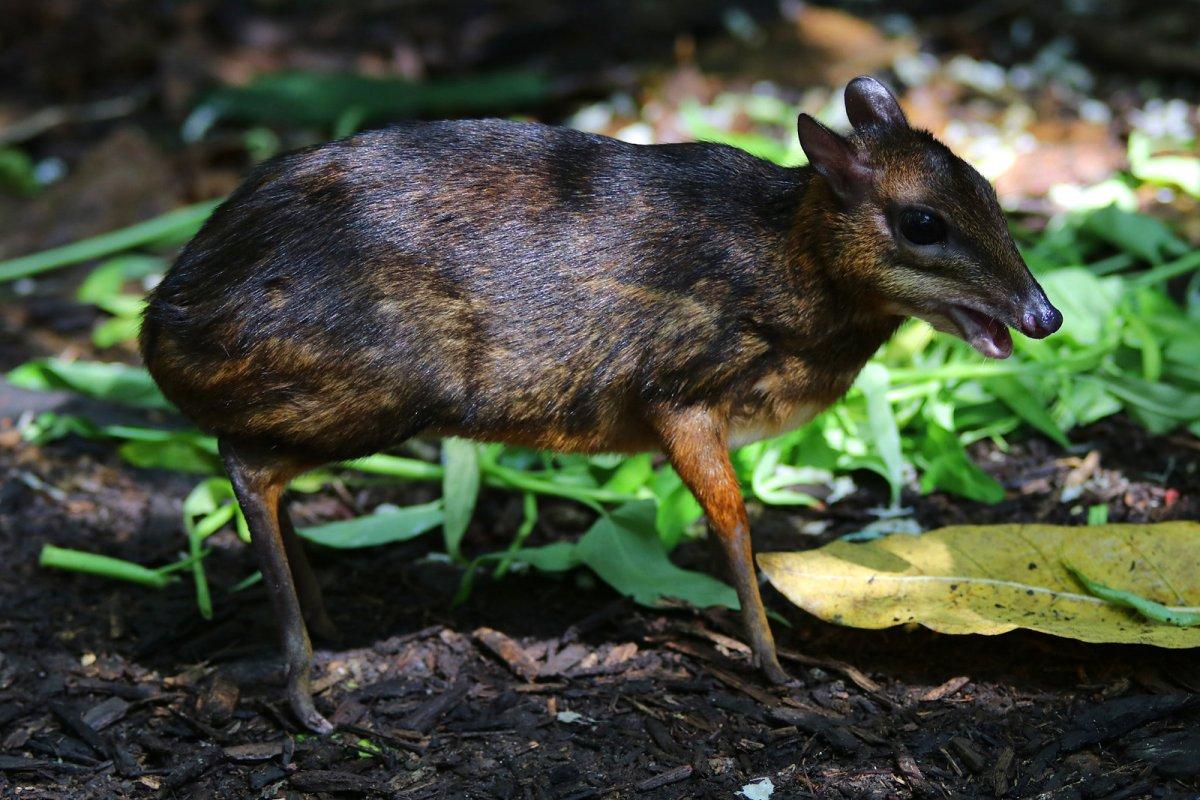
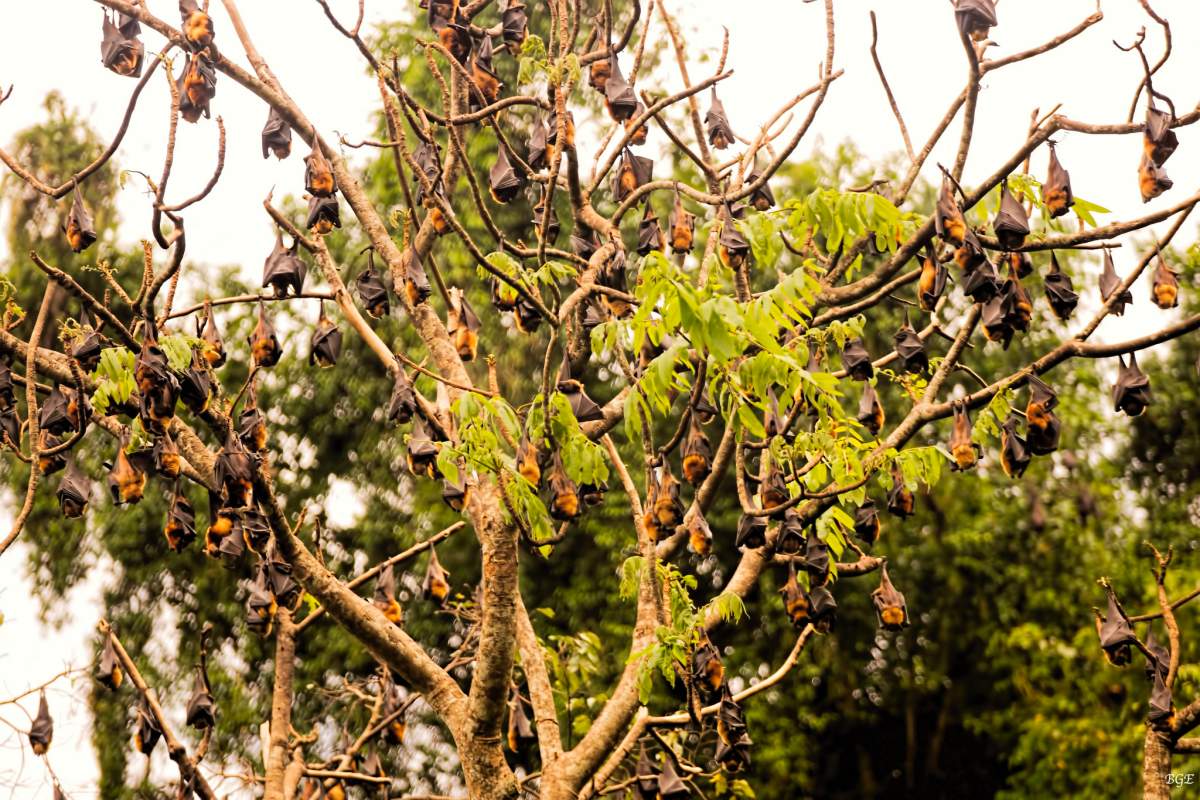
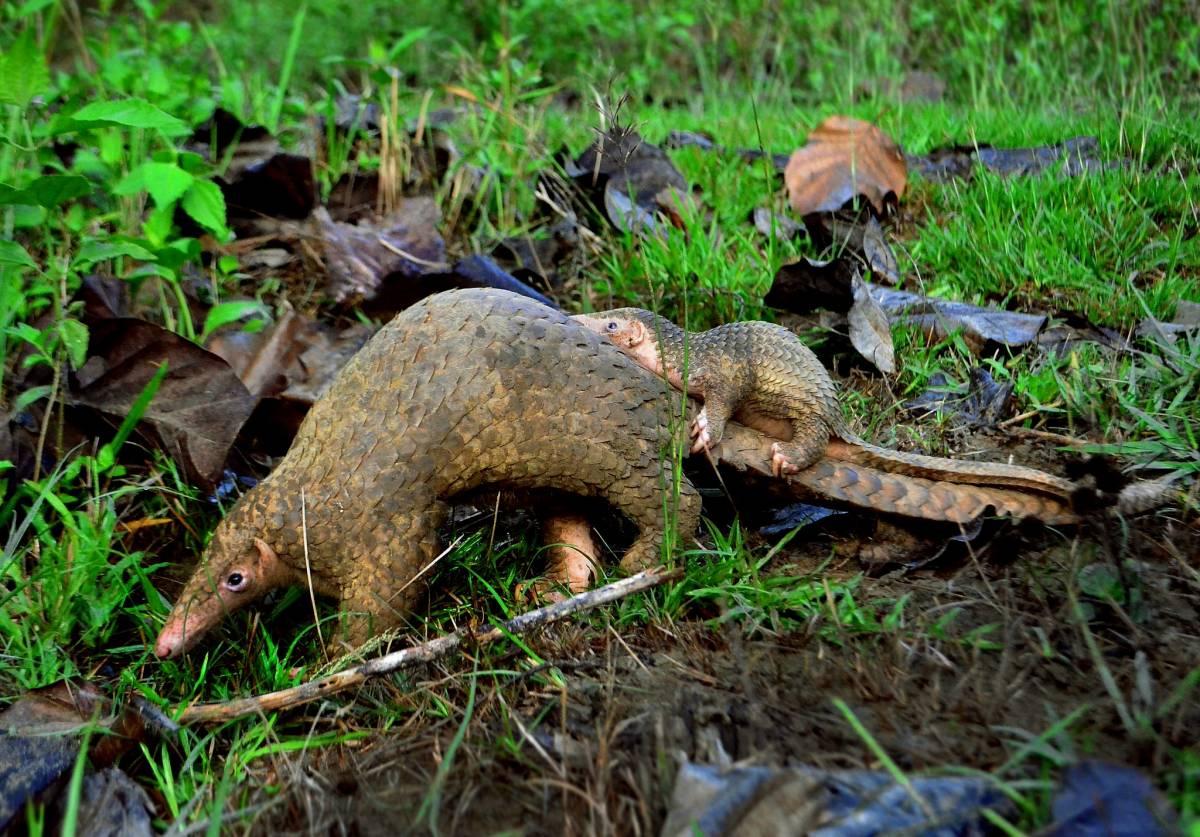
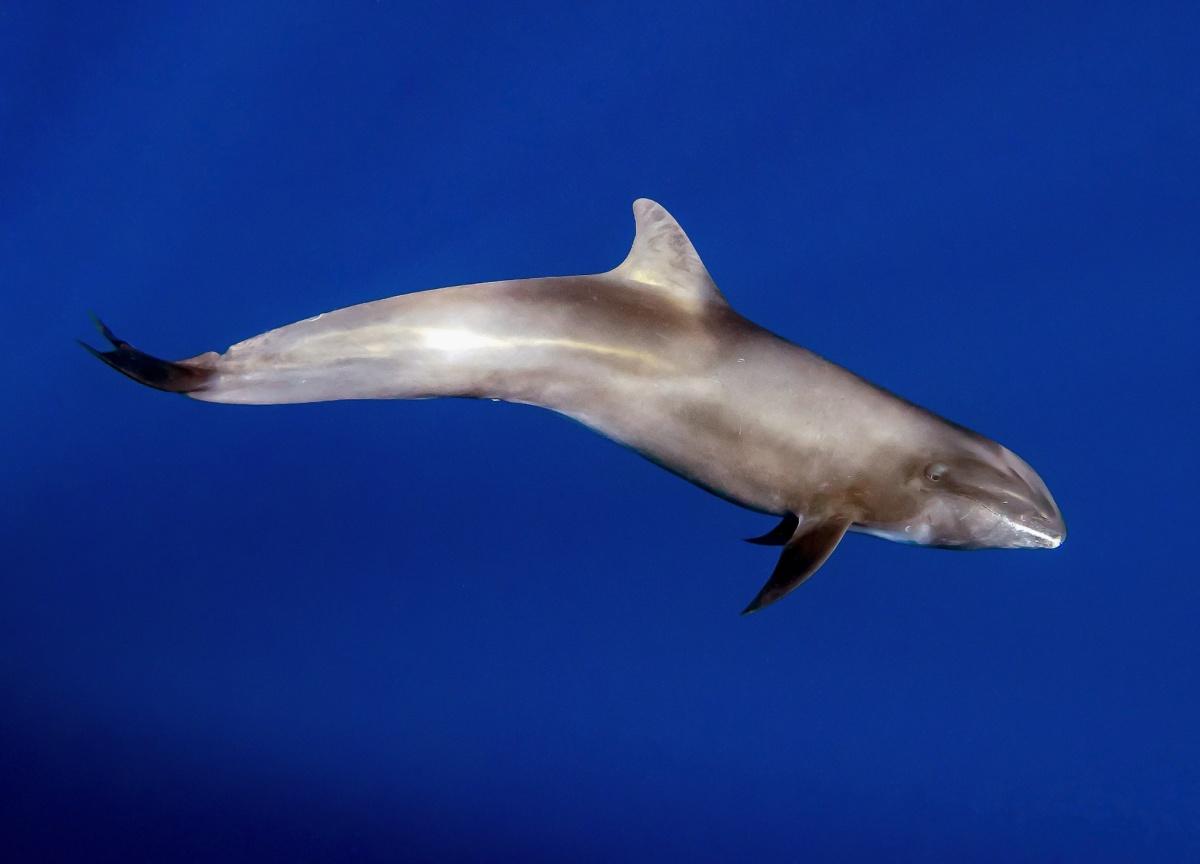
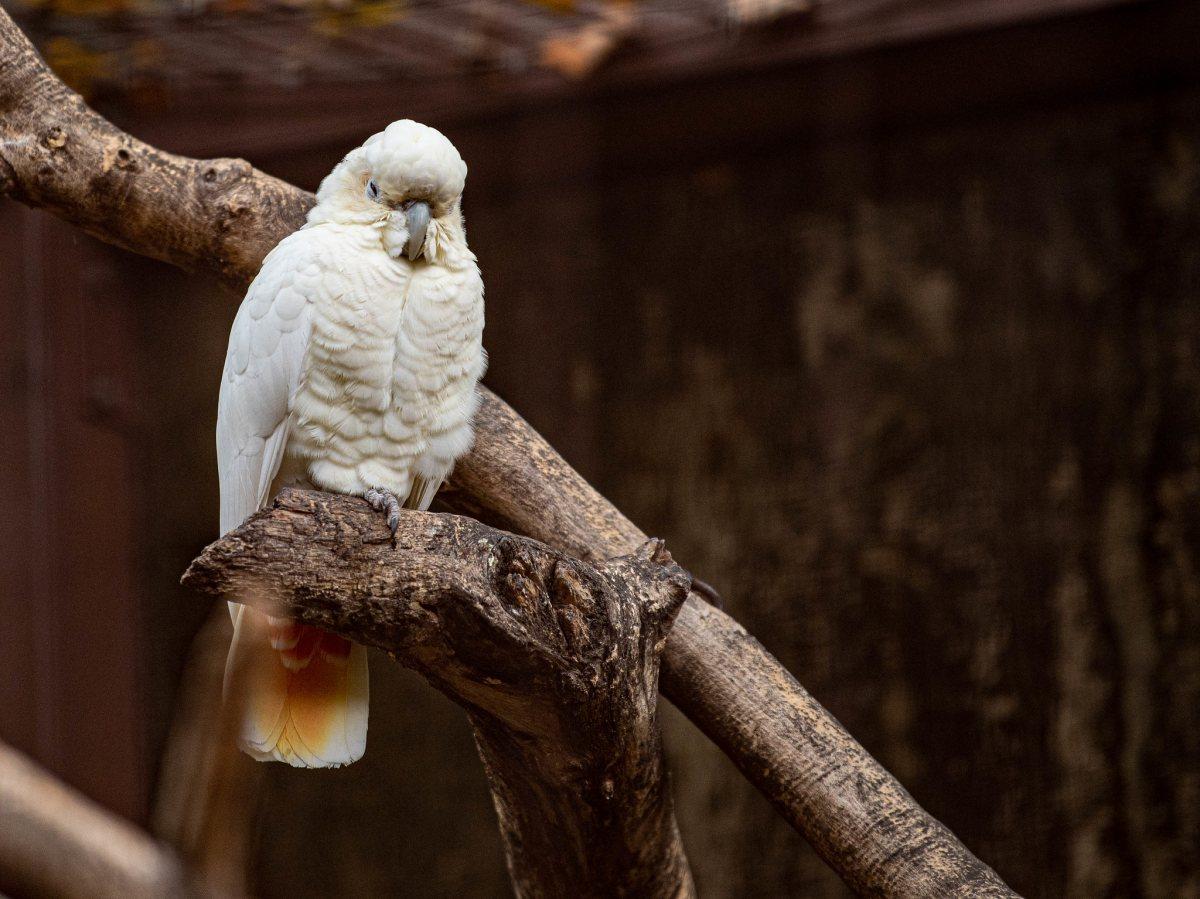
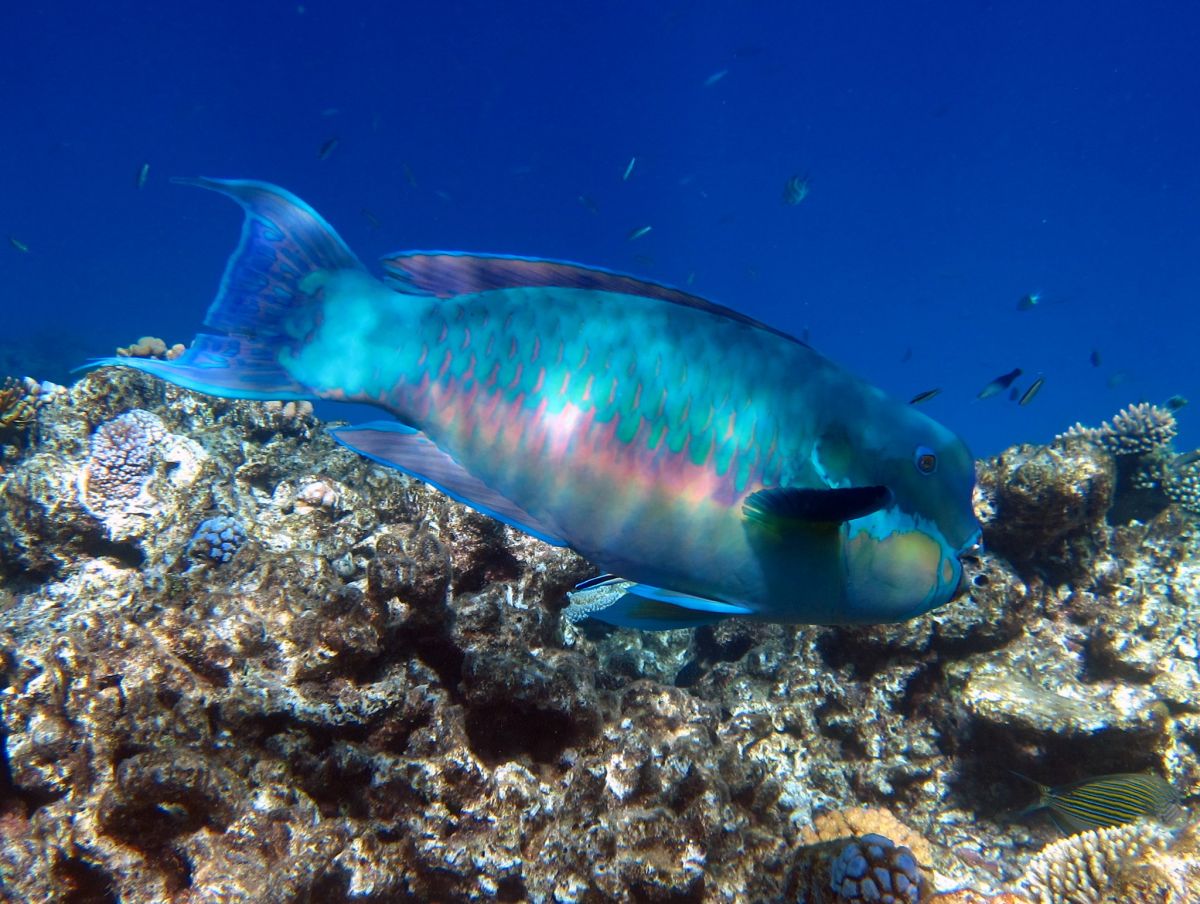

![13 Wild Animals in Ukraine [Wildlife in Ukraine]](https://www.kevmrc.com/wp-content/uploads/2022/09/13-wild-animals-in-ukraine.jpg)
![16 Wild Animals in South Australia [Wildlife in South Australia]](https://www.kevmrc.com/wp-content/uploads/2023/01/16-wild-animals-in-south-australia.jpg)
![30 Wild Animals in Saudi Arabia [Wildlife in Saudi Arabia]](https://www.kevmrc.com/wp-content/uploads/2022/08/30-wild-animals-in-saudi-arabia.jpg)